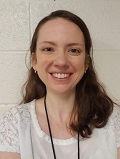Achieving Equity Through Assessments
By Laura Littrell and Kevin Williams
Posted on 2020-01-29
Our school requires all students to take chemistry. We teach all levels, ranging from Collaborative/Inclusive Chemistry to Honors and AP Chemistry. All of our classes have students who speak different languages, as well as students with a range of social and physical disabilities, home lives, and socioeconomic statuses. One way we ensure equity in our classroom is by implementing multimodal, phenomenon-based assessments.
Multimodal means students can communicate their understanding using discussion, writing, and/or visual (drawings, symbols, tables, graphs, charts, gestures) representations. Phenomenon-based assessments give students real-world connections to the science ideas and require them to use the science and engineering practices and crosscutting concepts to explain the phenomenon or propose a solution to a problem. Using this method, we can get a real measure of what students actually know.
How Does This Look in the Classroom?
In our Nuclear Chemistry Unit, we use the phenomenon of the Chernobyl disaster: specifically, why food is still contaminated more than 30 years later. One of the ways we assess student understanding early in the unit is with a Stop Motion Video project.
We divide students into groups of four and assign each group one element from the periodic table. The groups must illustrate nuclear processes—including fission, fusion, and alpha and gamma radiation—using stop motion video. Before they begin, we give them a quick introduction to the open source app Stop Motion Studio. The students have fun making a short stop motion video to learn the app’s mechanics.
Then we allow them one class period (90 minutes in our school) to plan and create a storyboard for their video. We lead a whole-class discussion about the criteria for each video, then together create a video checklist. The groups have to decide who will be responsible for each of the four nuclear processes assigned.
We give students examples of materials they can use to create models. They may use physical representations such as beads, beans, or marshmallows; we even had some students punch holes in paper and use the paper dots. Students can also use dry erase markers to write on their desks or markers and poster paper.
Students have complete control over the method they use. They use methods that are built into our classroom culture in which they get peer feedback from group members to ensure they are working toward the task criteria.
Students use the next class period to create their videos. They really have a ton of fun putting their own creative spin on communicating what they’ve learned, in a unique manner that other students can then use to inform people about nuclear radiation. The products they design very clearly tell us to what degree the students understand and are able to model nuclear processes, as well as the parts of atoms, all the while employing familiar technology (smart device).
Here is one student’s example: https://drive.google.com/file/d/16Gohu8tIF_87stFikNy1xXLiSfJe3Hfo/view?usp=sharing.
What we love most about this assessment is the way it gives our students choices in the way they demonstrate what they have learned. The task is scaffolded to allow students to be supported through each phase, whether that is through think-alouds as the teacher is discussing the task itself, or by working with peers in a meaningful way to brainstorm the best method for communicating the science ideas they have learned.
One of the really cool things we’ve experienced since teaching students to use this app is students informing us that they used this same technology for a project in a different class. It’s rewarding to discover that not only are we teaching science and checking for our students’ understanding, but we are also exposing our students to strategies that are meaningful to what they want to accomplish outside of the classroom.

 Laura Littrell teaches Chemistry at Boone County High School in Florence, KY. She has taught Science for 11 years. She has earned a Bachelor’s Degree in Chemistry at Butler University and a Masters Degree in Science Education at the University of Tennessee. She serves as Science teacher Ambassador for Boone County Schools working to implement NGSS across the district as well as improve Assessments to make them 3 dimensional. Littrell loves phenomenon driven instruction and continues to change her course so that students can connect Chemistry concepts to everyday phenomena.
Laura Littrell teaches Chemistry at Boone County High School in Florence, KY. She has taught Science for 11 years. She has earned a Bachelor’s Degree in Chemistry at Butler University and a Masters Degree in Science Education at the University of Tennessee. She serves as Science teacher Ambassador for Boone County Schools working to implement NGSS across the district as well as improve Assessments to make them 3 dimensional. Littrell loves phenomenon driven instruction and continues to change her course so that students can connect Chemistry concepts to everyday phenomena.
 Kevin Williams is a high school chemistry and engineering teacher in Florence, Kentucky. This is his 6th year teaching at Boone County High School. Williams holds a bachelor’s degree in biology and a master’s degree in education both from Northern Kentucky University. He is passionate about engaging students in three dimensional science lessons and making learning exciting.
Kevin Williams is a high school chemistry and engineering teacher in Florence, Kentucky. This is his 6th year teaching at Boone County High School. Williams holds a bachelor’s degree in biology and a master’s degree in education both from Northern Kentucky University. He is passionate about engaging students in three dimensional science lessons and making learning exciting.
Note: This article is featured in the January 2020 issue of Next Gen Navigator, a monthly e-newsletter from NSTA delivering information, insights, resources, and professional learning opportunities for science educators by science educators on the Next Generation Science Standards and three-dimensional instruction. Click here to sign up to receive the Navigator every month.
The mission of NSTA is to promote excellence and innovation in science teaching and learning for all.
Assessment Chemistry Equity NGSS Phenomena Science and Engineering Practices Teaching Strategies Technology Three-Dimensional Learning High School

